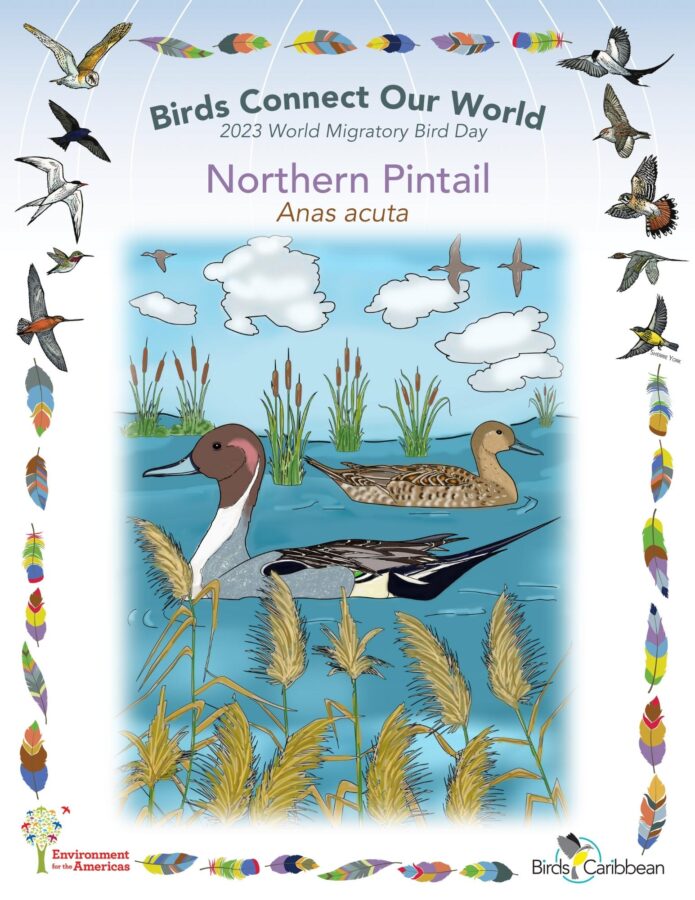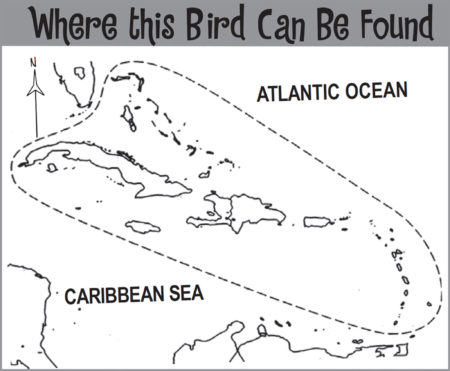Celebrate World Migratory Bird Day (WMBD) with us in 2023! This year’s theme is “Water: Sustaining Bird Life”. Have fun learning about a new migratory bird every day. We have coloring pages, puzzles, activities, and more. Download for free and enjoy nature with your family at home.
Migratory Bird of the Day: Northern Pintail
Meet the Northern Pintail, a flier extraordinaire! They can spring straight up from the water’s surface, wheeling and darting through the air on their slender wings. They are one of the first ducks to migrate south in the fall, traveling during the night at speeds of ~48 miles per hour (77.2 km/h)! Their nickname, “greyhound of the air,” suits them well!
Northern Pintails are undoubtedly elegant with a long neck, slim body, and pointed tail. Breeding males are absolutely dapper with a gleaming white breast, a white line down their chocolate brown head and neck, gray upperparts, and prominent long and pointed tail. Females have a plain tan head and plumage is mottled in browns and whites with a scalloped effect. Nonbreeding males look similar to females but retain their upper-wing pattern and long gray shoulder feathers. Juveniles have a plain appearance with a darker, browner crown, less buffy upperparts and flanks, and more spotted below.
Northern Pintails leave their breeding grounds in Canada and the US in August and migrate along the Atlantic coast to the Caribbean and South America, arriving in late October. Look for these ducks at mangrove swamps, estuaries, salt ponds, reservoirs, and also flooded agricultural areas. You might spot them feeding tail-up in shallow water, as they pick snails and worms from the moist soil and water. In swamps and ponds, they also dabble for aquatic plant seeds, insects, and crustaceans at the water surface by filter feeding with their bill. On land they feed on grains (rice, wheat, corn, barley) and by digging out tubers (potatoes) out the ground using their bills.
When it comes to breeding, Northern Pintails, like all “dabbling ducks,” form pair bonds on the wintering grounds. To attract a female’s attention, males perform elaborate and ritualized courtship displays like “head-up-tail-up” and “grunt-whistle.” This latter display entails stretching their necks up and tipping their bills down while giving a whistle call. They also perform “turn-back-of-head” while swimming away to show off the gorgeous purplish iridescence on the back of their heads. Females show which courting male they have chosen by following him and performing the “inciting” display, which includes head-bobbing while making a grunting vocalization..
Northern Pintails are common but their population is decreasing. Loss of wetland habitat, cultivation of grasslands, and agricultural practices that destroy nests have all contributed to this decline. It is important that we work together to restore and maintain our tropical wetlands. Ditch the chemical fertilizers and pesticides that can leach into our wetlands. Keep trash out of wetlands by reusing and recycling to the best of your ability, and don’t be afraid to deep dive into the wonders of wetlands to educate yourself and others! Learn more about this species, including its range, photos, and calls here.
Color in the Northern Pintail
Download the Migratory Birds of the Day Coloring Page! Use the picture above and the photos on this page as your guide, or you can look up pictures of the bird online or in a bird field guide if you have one. Share your colored-in page with us by posting it online and tagging us @BirdsCaribbean #WMBD2023Carib
Listen to the calls of the Northern Pintail
The calls the male Northern Pintails are short bursts of wheezy sounding whistles.
Puzzles of the Day
Click on the images below to do the puzzle. You can make the puzzle as easy or as hard as you like – for example, 6, 8, or 12 pieces for young children, all the way up to 1,024 pieces for those that are up for a challenge!
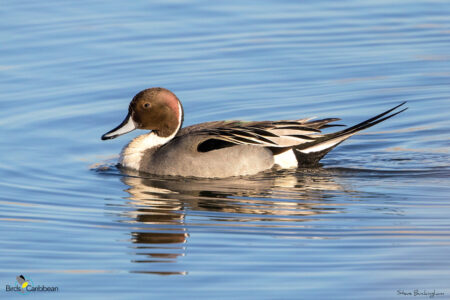
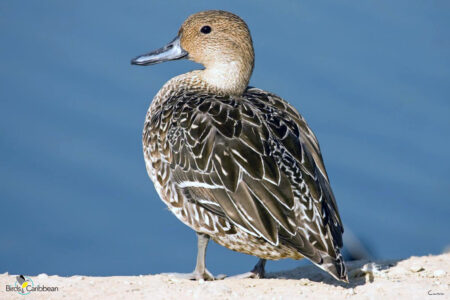
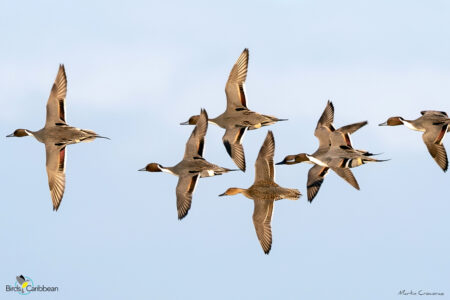
Activity of the Day
FOR KIDS: Learn more about the Northern Pintail—it’s fascinating biology and behavior, and then learn how to sketch it! Presented by Dr. Lisa Sorenson, BirdsCaribbean, and naturalist and artist, Christine Elder. This fun webinar is part of our Caribbean celebration of World Migratory Bird Day (WMBD). Have fun learning about other migratory birds with us in our “Birds Connect our World” pages! We have colouring pages, puzzles, activities, videos, fun facts, and more. Download for free and enjoy nature with your family at home.
FOR KIDS AND ADULTS: Enjoy these videos of Northern Pintails in the wild! In the first you can see a male and female searching for food in shallow water. In the second you can see a male in breeding plumage preening

